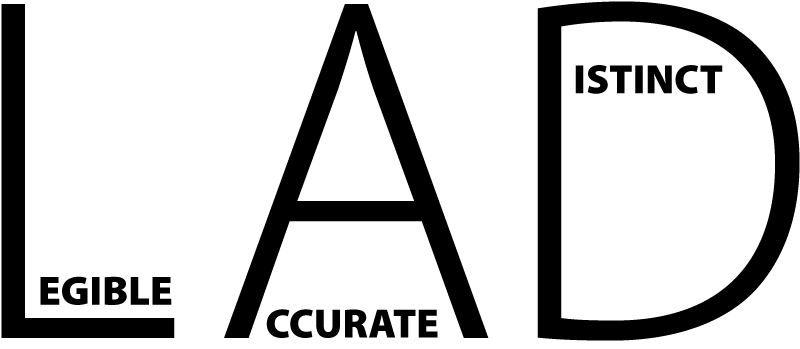
As the basic function of applying a logis one of distinctive legibility, the follow three L A D rules can be more practical for everyday use than the specific, technical specifications used in style guides.
While these do not replace the exacting specifications mandated in style guides, they also don’t require any technical understanding of design to follow. Using L A D may increase the chances of a logo being implemented with good legibility and distinction.
A logo should be applied in such a way that renders it:
Legible
The elements making up the logo are clearly perceivable when viewed under the conditions where it is deployed, and taking into account the abilities of the target users.
A logo that is applied to a billboard will been to be large enough. If the audience if vision-impaired, the elements of the logo needs to be clear enough.
Accurate
The logo should not be distorted - ie squashed one way or another, twisted out of shape, wrapped around objects in such a way that obscures some of the elements, or be rendered in a pixelated/distressed manner, or using the wrong colours.
A low resolution file used for offset printing will result in pixelated output that interferes with accuracy. Using the wrong colours can dramatically alter the logo and interfere with the intended reading.
Distinct
The logo must not look like it is part of other elements, or is somehow connected to other elements. Other elements can be other logos, graphical elements on the page or billboard, or even built (architectural) elements that intrudes into the viewing space of the logo.
A drainpipe can become an unwanted element of a misplaced logo. Logos spaced too closely together can visually merge into one.